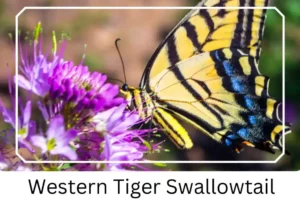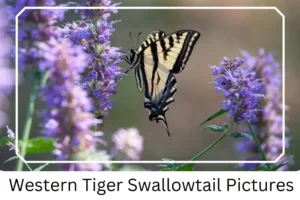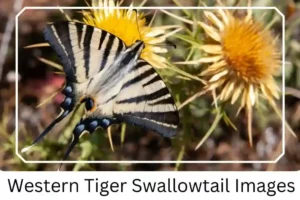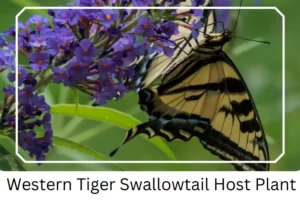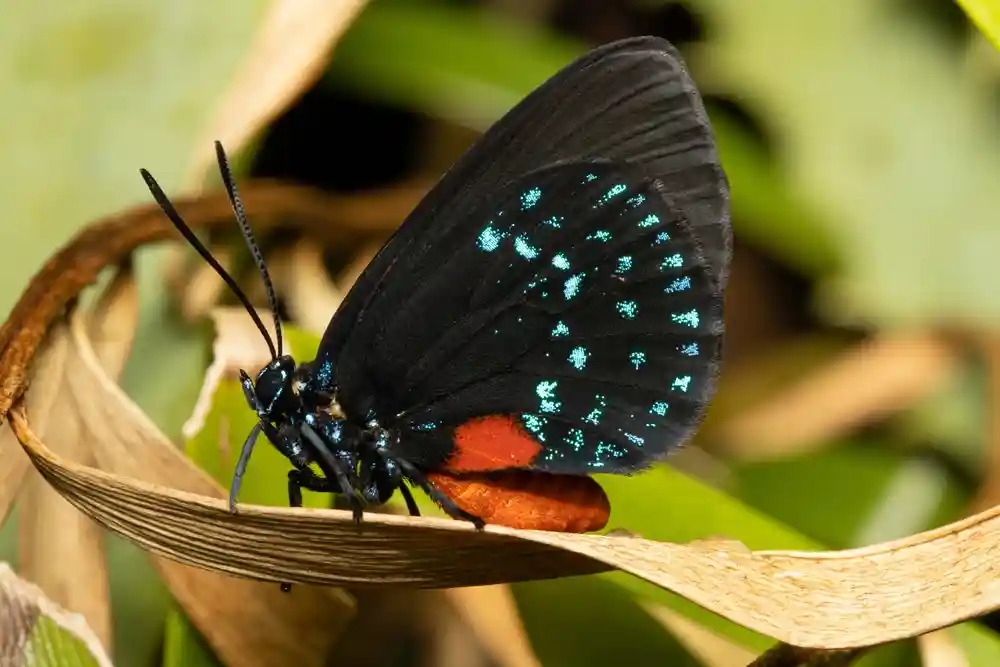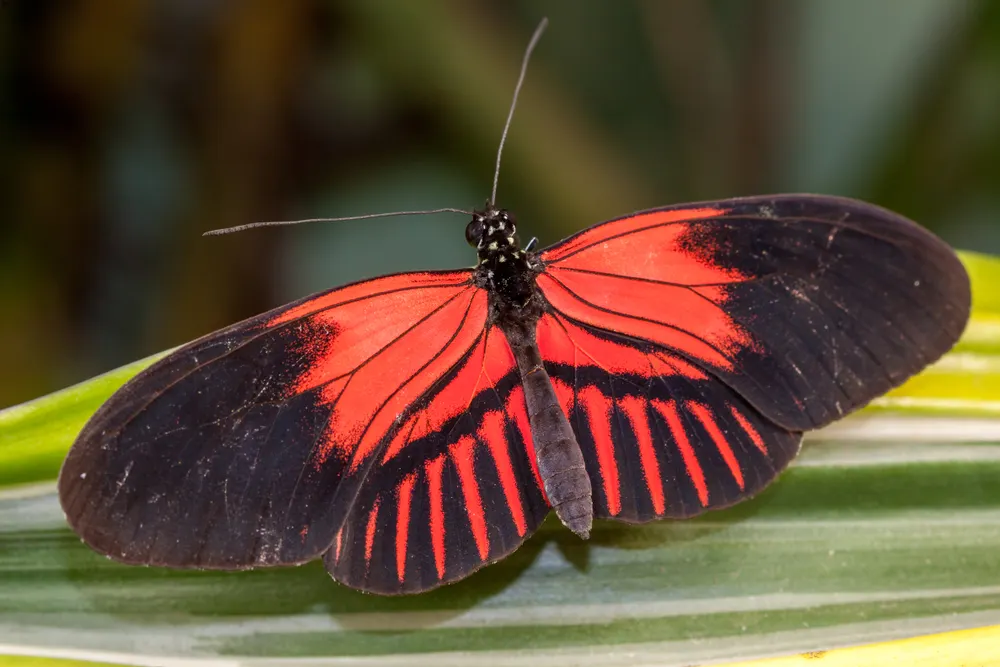Western Tiger Swallowtail (Papilio rutulus)
The Western Tiger Swallowtail is a captivating species within the diverse swallowtail butterfly family, renowned for its striking appearance and dynamic behavior. This butterfly is not only a marvel of nature’s design but also plays a significant role in the ecosystems it inhabits. Thriving in sunny locales and often seen engaging in mud-puddling behavior, these butterflies are a common yet enchanting sight during the summer months, particularly between June and July.
Scientific Classification
- Family: Papilionidae
- Genus: Papilio
- Scientific Name: Papilio rutulus
Overview
Belonging to the ‘swallowtail’ group, the Western Tiger Swallowtail embodies the essence of wild beauty through its vibrant colors and distinctive wing shapes. This species’ lifecycle, from the camouflaged caterpillar to the brightly colored adult, offers a fascinating glimpse into the adaptability and diversity of butterflies. Their preference for sunny habitats and their presence in various regions, including the western United States and southern British Columbia, underscore their adaptability and the joy they bring to butterfly enthusiasts and casual observers alike.
Description and Identification

 Caterpillar
Caterpillar
Initially resembling bird droppings for camouflage, Western Tiger Swallowtail caterpillars undergo a remarkable transformation. Post-hatching, they quickly evolve into a bright green color adorned with yellow eyespots marked with black and blue, an adaptation to deter predators. This molting process occurs five times over, allowing the caterpillar to reach up to 5 cm in length, with the entire process kickstarting approximately four days after the eggs are laid.
Pupa
The chrysalis phase introduces a light brown cocoon accented with golden spots and ten black spines along the ventral side, a design that blends seamlessly into the surroundings. The thorax curves distinctly, featuring multiple short black spines that mimic the antennae, preparing it for the next stage of its lifecycle.
Adult Butterfly
Sexual Dimorphism: Absent in this species, making males and females visually similar.
Color and Appearance: Adults boast triangular wings with sword-like extensions at the hind wings’ base. Open wings reveal a white to pale yellow base with black vertical stripes and bands, while closed wings showcase a cyan blue hue along the rounded borders of the hind wings, adding to their distinct appearance.
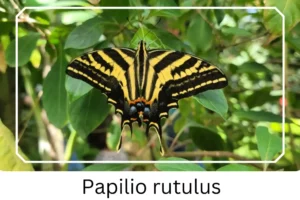
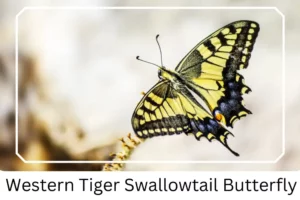 Average Wingspan: Ranges from 2¾ to 4 inches (7 – 10 cm), allowing for graceful, gliding flight patterns with minimal flapping.
Average Wingspan: Ranges from 2¾ to 4 inches (7 – 10 cm), allowing for graceful, gliding flight patterns with minimal flapping.
Flight Pattern: Characterized by a smooth gliding motion interspersed with occasional flaps, enabling efficient and energy-conserving travel.
Eggs
Eggs are dark green, glossy, and spherical, laid singly on the undersides of host plant leaves. A single female may lay up to a hundred eggs, ensuring the continuation of the species.
Quick Facts | |
| Distribution | Found across the western United States and southern British Columbia. |
| Habitat | Favors suburban gardens, meadows, stream sides, and woodland edges. |
| Lifespan of Adults | Ranges from 6-14 days. |
| Host Plants | Includes willows, aspens, ashes, poplars, alders, and cottonwood. |
| Adult Diet | Primarily nectar from thistles, zinnia, abelia, yerba santa, and California buckeye. |
How to Identify Western Tiger Swallowtail?
Identifying the Western Tiger Swallowtail can be an engaging activity for both seasoned enthusiasts and novices. Look for their large, triangular wings with distinct protrusions, resembling swords at the hind wings’ base. The unique pattern of white to pale yellow with black vertical stripes when the wings are open, and the cyan blue hue on the closed wings’ rounded borders, are key indicators. The presence of two blue spots at the inner corner of the hind wings further distinguishes them. During their flight, observe the graceful, gliding pattern with fewer flaps, a hallmark of their species. Lastly, spotting them in their preferred habitats, such as suburban gardens, meadows, and woodland edges, during their peak months of June and July, will increase your chances of identification.
Did You Know?
- The Western Tiger Swallowtail is among the most commonly encountered large butterflies in urban and suburban areas, making it a familiar sight for many.
- Their larvae’s mimicry of bird droppings is a remarkable survival strategy, allowing them to avoid predation during their most vulnerable stages.
- These butterflies are not just beautiful; they’re important pollinators, contributing to the health of their ecosystems by facilitating plant reproduction.
Conclusion
The Western Tiger Swallowtail butterfly, with its mesmerizing colors, intricate life cycle, and ecological importance, is a true jewel of nature. Whether you’re a dedicated butterfly watcher or someone who appreciates the beauty of nature, understanding and recognizing this species adds a layer of appreciation for the complexity and interconnectedness of our natural world. Their presence, from caterpillar to majestic adult, serves as a reminder of nature’s resilience and the beauty that lies in the process of transformation.

